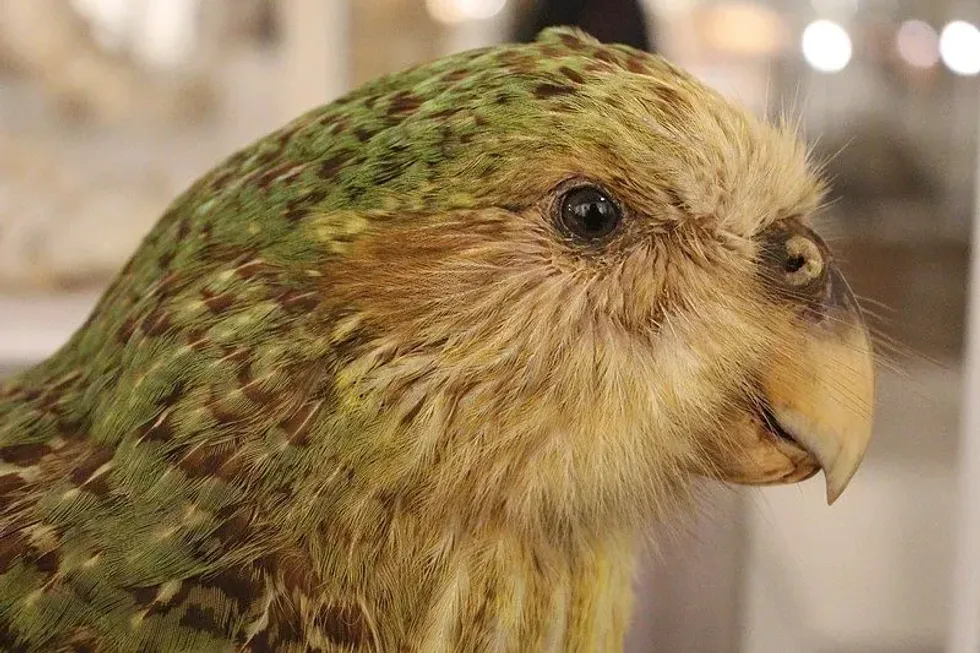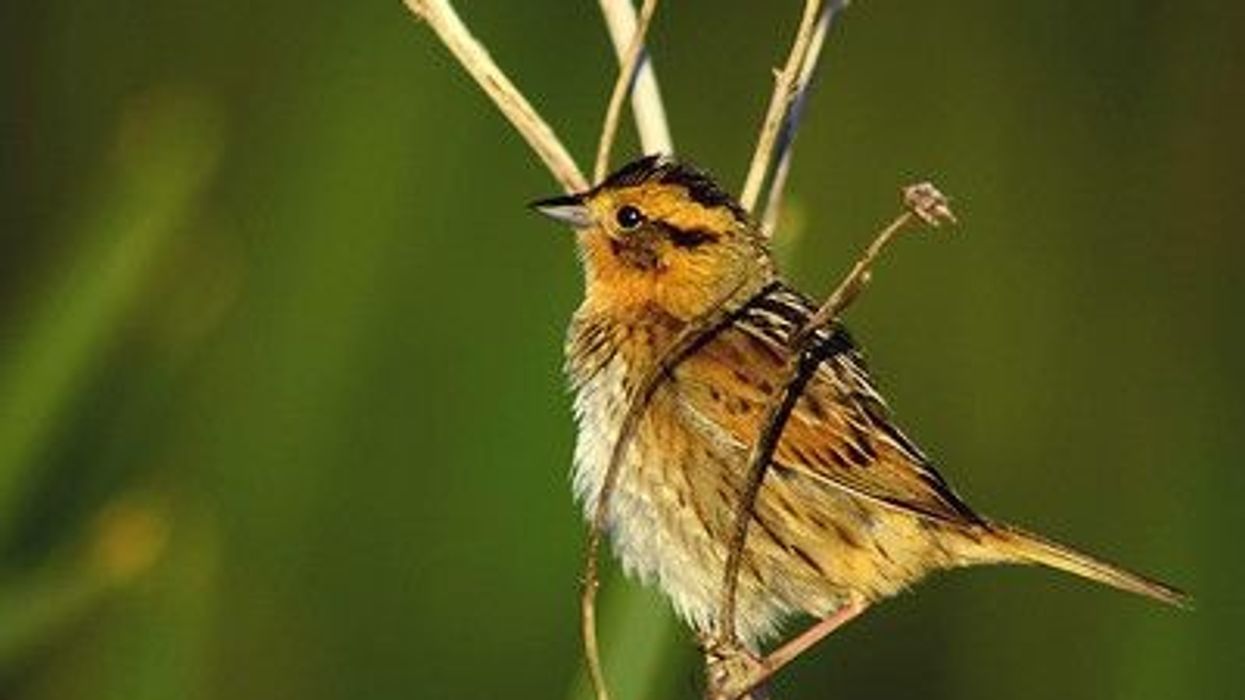The parrots native to New Zealand can be divided into three species, namely the kakapo (Strigops habroptilus), kea (Nestor notabilis), and New Zealand kaka (Nestor meridionalis). Popular as the bulkiest parrot species in the entire world, Strigops habroptilus, derives its name from the Māori vocabulary kākāpō.
The term kākāpō, when translated into English, implies a night parrot.
This fits in well with the bird's behavior as, unlike the kakas (diurnal), these birds are nocturnal, just like the owls. Moreover, the species have also been regarded as owl parrot owing to its owl-like facial appearance.
History serves as an alibi to the vulnerable position shared by the kakapo and the other two species. Historically, initiatives were taken up by the government when in the year 1891, with the assiduous efforts of Richard Henry, 200 kakapos were transferred to Resolution Island within six years to provide them a predator-free dwelling ground.
However, in the next six years, the species almost became extinct due to the intrusion and predation of stoats.
To combat the situation, three birds were again shifted to Little Barrier Island, but the presence of feral cats worsened the situation.
On the other hand, five kakapos were moved to the Mount Bruce Bird Reserve, but within four years, all of them perished. The once abundant species completely lost its geographical range in the North Island and became extinct.
If you like this article, check out whistling kite facts and western tragopan facts.
New Zealand parrot Interesting Facts
What type of animal is a New Zealand parrot?
The New Zealand parrot is a species of bird.
What class of animal does a new Zealand parrot belong to?
New Zealand's kakapos, keas (Nestor notabililis), and New Zealand kaka (Nestor meridionalis) belong to the Aves class. The scientific name of the kakapo can be used for both Strigops habroptilus and Strigops habroptila.
How many new Zealand parrots are there in the world?
As per records, only 116 adult kakapos are remaining worldwide, categorizing it as one of the most critically endangered parrot species. The kakapo already became extinct in the North Island around the 1920s while their population showed a great downward trend in the South Island.
Currently, on the Kiwi island nation, there are about 3,000 -7,000 keas and 180-250 kakas which might soon go extinct.
Where does a new Zealand parrot live?
A native species of New Zealand that had been free from mammalian predators, the kakapo, can be located in the Stewart Islands, South Island, and North Island, while keas can be primarily located in the South Island. These birds can also currently be traced in Whenua Hou or Codfish island.
Some other islands where the kakapo and kaka might be located are the Little Barrier, Maud, Chalky, and Anchor Islands.
What is a New Zealand parrot's habitat?
The habitat range of these birds mainly encompasses mossy forests, shrublands, and grasslands. Kakapos prefer to stay on open ground near river beds, scrubs, or meadows, while keas and kakas can be found in the coastal areas.
Who does the New Zealand parrot live with?
The social behavior of the kakapo is not known, but the bird makes a wonderful pet. The male member of the species doesn't stick with its female partners. Keas and kakas move in large flocks displaying sociable behavior.
How long does a New Zealand parrot live?
On average, these flightless kakapo birds can live up to 40-8o years or more while keas and kakas live for 20 years. Did you know that the age of the longest to live kakapo was aged 120 years while the oldest kea is aged 50 years?
How do they reproduce?
The breeding season extends from December to February, and mating occurs at night. However, the breeding season doesn't count much as the reproduction and breeding cycle don't occur every year.
Reproduction and breeding are normally recorded in times when these birds can procure ample food on the island areas they inhabit. Female kakapos attain sexual maturity at about 9-11 years, while keas and kakas mature around three years.
The breeding procedure among kakapos is unique as the males engage in lek mating to attract females. Moreover, the males engage in copulation with several female partners throughout their lives, but the females stick to one mating partner.
After copulation, nests are constructed in a burrow inside crevices or hollows between two trees. Normally the females lay one to two eggs but can reach up to a maximum of five eggs.
The incubation period extends for about 30 days, after which the chicks hatch. The kakapo males don't indulge in parental care, but both kea and kaka parents care for the chicks.
What is their conservation status?
According to the International Union for Conservation of Nature (IUCN) Red List, the kakapo has been categorized as a Critically Endangered species, which implies that these birds are currently in an extremely vulnerable position, almost at the brink of extinction. The Department of Conservation maintains that the kakapo is Nationally Critical.
However, as per computations, the population trend of the species shows an increase aided by some noticeable conservation efforts by the government to save the kakapo from extinction. The kaka and kea have been classified as Endangered.
The Kakapo Recovery Program was implemented in 1995 to revive the kakapo population and avert absolute extinction. In 2019, the Kakapo Recovery unit working under the Department of Conservation had recorded the highest fertility rate, with more than 200 eggs accompanied by fledging of 72 chicks. Search and rescue operations are being taken by the Department of Conservation.
New Zealand Parrot Fun Facts
What does the New Zealand parrot look like?

These large-sized ground-dwelling Strigops habroptila possesses a mossy yellow-green shaded plumage. Their legs and feet are pinkish-gray. The beak is large and gray, while their wings are comparatively shorter than their body structure and large feet. Their disk-like face resembles that of an owl.
These parrots have appealing dark brown eyes. The plumage of the keas is olive-emerald colored. The narrow, curved beak is gray-brown. The kakas have a darker-hued plumage than keas with reddish underparts and grayish-brown crown and forehead.
How cute are they?
Parrots are absolutely love at fight sight! The chubby and colorful appearance with an owl-like face of kakapos gives them the cutest charms. It's adorable and sometimes hilarious to see these hefty parrots hopping and running among trees instead of gliding and soaring in swift flights like other birds.
How do they communicate?
These otherwise naïve birds communicate through innumerable calls and sounds that include growls, squeaks, croaks, hoots, and shrieks. Sounds like the 'skraak' in a high-pitched tone or chinging for luring their mating partners are some of the common vocalizations. Keas are famous for the 'kee-ah' variation.
How big is a New Zealand parrot?
The average length of kakapos is in the range of about 23-25 in (58-64 cm). They are larger than any other parrot species.
Both keas and kakas are medium-sized. Keas have an average length of 18.9 in (48 cm) while kakas stand at 18 in (45 cm). These birds are smaller than the hyacinth macaws measuring around 39.4 in (100 cm).
How fast can a new Zealand parrot fly?
Curiously, the unique fact about the kakapos is that these birds are flightless due to their bulky stature. In fact, they often freeze in the middle of a bushy forest area when they are scared. The speed range of New Zealand's kakas and keas remains unknown.
How much does a new Zealand parrot weigh?
The weight of kakapos ranges from 2-9 lb (0.95-4 kg), keas weigh about 1.8-2.2 lb (0.8-1 kg), while kakas are around 0.9-1.3 lb (0.4-0.6 kg).
What are the male and female names of the species?
The males are commonly called cocks, while females are referred to as hens.
What would you call a baby new Zealand parrot?
Baby parrots are regarded as chicks, nestlings, or hatchlings.
What do they eat?
Their diet comprises fruits, seeds, pollens, berries, flowers, nuts, and sometimes sapwood. The food extracted from trees, like the Rimu tree, is retrieved with assiduous efforts as kakapos cannot fly. Additionally, the omnivorous kakas and keas gobble up small insects, unlike the kakapo.
Are they dangerous?
Kakapos, keas, and kakas are absolutely the opposite of dangerous. They are docile birds with gentle, non-aggressive nature. Even the wild ones might climb on your hands and engage in preening. Nevertheless, they might cause allergic reactions.
Would they make a good pet?
Historically, the native Māori people sometimes nurtured the plump kakapos as pets. Even the European settlers followed suit.
Generally, parrots portray a friendly approach towards human beings and can be taken in as pets. However, these critically endangered birds must not be confined in cages or brought up as pets. Rather, they must be offered a safer environment, for instance, predator-free islands, to thrive.
Did you know...
Several Māori folklores and legends speak of the kakapo. The Māori had high esteem for these birds as they were in high demand for the meat and their beautiful yellow-green feathers that were used to produce exquisite clothing articles.
Keas are hailed as clowns of the mountains for their intelligent yet cheeky nature.
The kakapo is known to be nocturnal. The night parrot takes refuge under shrubs, in hollows of short trees, or burrows in the bright hours of daytime while its search for food and other activities initiates in the darkness of night.
Carwardine and Stephen Fry documented the status of kakapos residing in the Whenua Hou in the BBC's sequence 'The Life of Birds'. It's through this show that Sirocco, the kakapo acquired fame.
Kakas of genus Nestor are already extinct in the Chatham Islands.
What is the rarest bird in NZ?
The kakapo of genus Strigops is known to be the rarest among all the species of birds in New Zealand owing to its Critically Endangered status. The International Union for Conservation of Nature (IUCN) has recorded its population at just 116 mature individuals. With such a small population, they can become extinct anytime.










